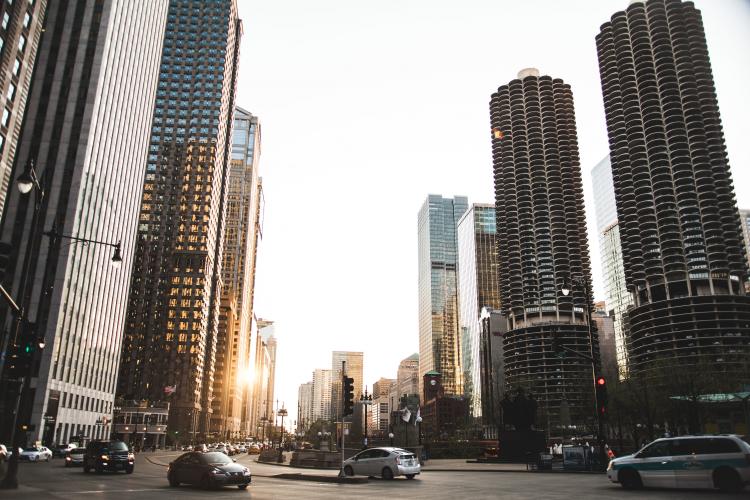
This summer, not even halfway through, has already seen some of the hottest temperatures on record. The National Oceanic and Atmospheric Administration (NOAA) recently reported in its monthly climate update that this past June was the hottest June on record since global temperature record-keeping began in 1850. And unfortunately, the heat is here to stay.
Global temperatures have been steadily increasing since the Industrial Revolution and are projected to increase by about 1.5°C (2.7°F) by 2050 (Wisconsin Department of Natural Resources, n.d.). A phenomenon known as the Urban Heat Island (UHI) effect puts cities especially at risk during times of extreme heat. UHI explains that dense, crowded urban areas can feel hotter than nearby suburban and rural spaces.
Extreme heat is not only uncomfortable but also deadly as heat is the leading weather-related cause of death in the United States. Heat can contribute to deaths from heart attacks, strokes and other forms of cardiovascular disease (EPA, 2021). And as temperatures rise, so does the need for air conditioning, often at times of peak energy demand, driving up energy consumption and greenhouse gas emissions.
MEEA has been conducting research on UHI in an effort to better understand current mitigation strategies implemented throughout the Midwest and to explore the role utilities and other stakeholders can have in tackling UHI. What started as a poster for ACEEE Summer Study has evolved into a newly released white paper, It’s Getting Hot in Here: A Roadmap for Stakeholder Involvement in Urban Heat Island Mitigation. A few key findings on UHI mitigation initiatives are outlined below.
Mapping efforts, community engagement and tree planting are initiatives used throughout the Midwest to address UHI. Mapping and community engagement efforts are a common way for stakeholders to understand where UHI impacts are greatest. These are important efforts as understanding where and who UHI impacts can help decision-makers determine where to implement mitigation efforts. It is especially crucial that mapping and community engagement efforts involve those that are directly impacted by UHI as they are often experts of the UHI experience and in most cases, benefit the most from UHI efforts and mitigation.
An example of a mapping and community engagement initiative is the Climate Adaption Planning and Analytics (CAPA) Heat Watch campaign. Since 2017, NOAA and the Integrated Heat Health Information Systems have worked in partnership with CAPA Strategies to support over 60 + communities across the United States in mapping their urban heat islands. The volunteer-based community science field campaign builds upon local partnerships and engages residents to learn about extreme heat and UHI. Volunteers attach sensors to their cars, capturing temperature and humidity data along pre-set routes to understand where heat is greatest. The final product is a report generated by CAPA Strategies and a set of high-resolution air temperature and humidity data. Fourteen communities have been chosen for the 2023 campaign, including the following Midwestern cities: Chicago, IL; Iowa City and Cedar Rapid, IA; Toledo, OH and Johnson County and Wyandotte County, KS. To learn more about the UHI Mapping Campaign, visit here.
As mentioned earlier, tree planting is another common avenue taken to mitigate UHI and its effects. Nonprofits, local governments, utilities and other stakeholders are leading several initiatives throughout the Midwest to increase canopy cover. Keep Indianapolis Beautiful (KIB) has the goal to increase tree cover in Indianapolis by planting 100,000 large trees. Another example is Our Roots Chicago, which is a community-focused effort to plant 75,000 new trees in Chicago by 2027. Additionally, tree planting was recently included in the most recent version of the statewide technical reference manual (IL-TRM) so that utilities in Illinois can claim savings from tree planting. In Missouri, Evergy and Ameren are currently working with stakeholders and subject matter experts to understand and address UHI through stakeholder workshops.
These are just a few examples of how different stakeholders can be involved in UHI mitigation. As extreme heat and its adverse effects are a growing problem, it is imperative that all stakeholders become involved where they can. For more information on urban heat islands and how decision-makers can help tackle UHI, please read our newly released white paper.